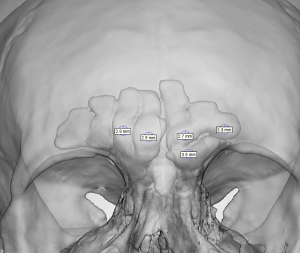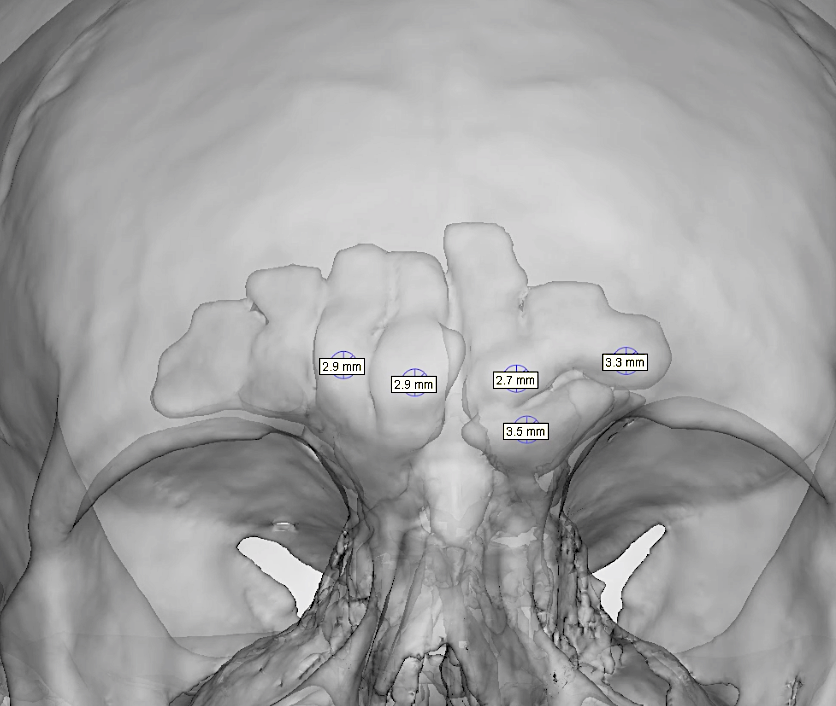Brow bone reduction surgery, today most commonly performed for forehead feminization, changes the prominence of the anterior wall of the frontal sinus. (brow bones) The prominence of the brow bones is caused by the development of the underlying frontal sinus which in men is greater than that of females. While typically thought of as a standard operation performed the same way in everyone the brow bones are known to have some variability in their anatomy which can influence how the surgery is done.

Their findings showed the absence of bilateral frontal sinuses in two (2) patients (2%) with one sided absence occurring in eight (8) patients. (8%) Which that means is that in one out of every ten people (10% of the male population) some failure to develop a frontal sinus occurs on one or both sides. (most commonly unilateral)
Of equal interest is that 39 patients (39%) had moderate to severe frontal sinus development asymmetry. Whether this correlated directly to the overlying brow bones being asymmetric is not clear…although one would assume a near 1:1 correlation. In addressing that correlation the study found that a linear size correlation between brow bone prominence and size of the frontal sinus occurred in just 22% of the patients. A larger frontal sinus size compared to the brow bone prominence was found in 38% while the reverse was true in 40% of the patients.
What this study shows is that there is much greater variability in frontal sinus development and overlying brow bone prominences that is traditionally thought. This supports the reason a 3D CT scan is needed in every brow bone reduction patient, genetic male or female, to understand their exact anatomy and then devise a surgical plan (anterior wall setback vs burring reduction) that best suits their anatomic needs.
Since this study was done in genetic males it equally applies to the two patient populations (cis-male and transfemales) that make uop the vast majority of brow bone reduction patients.
Dr. Barry Eppley
World-Renowned Plastic Surgeon



